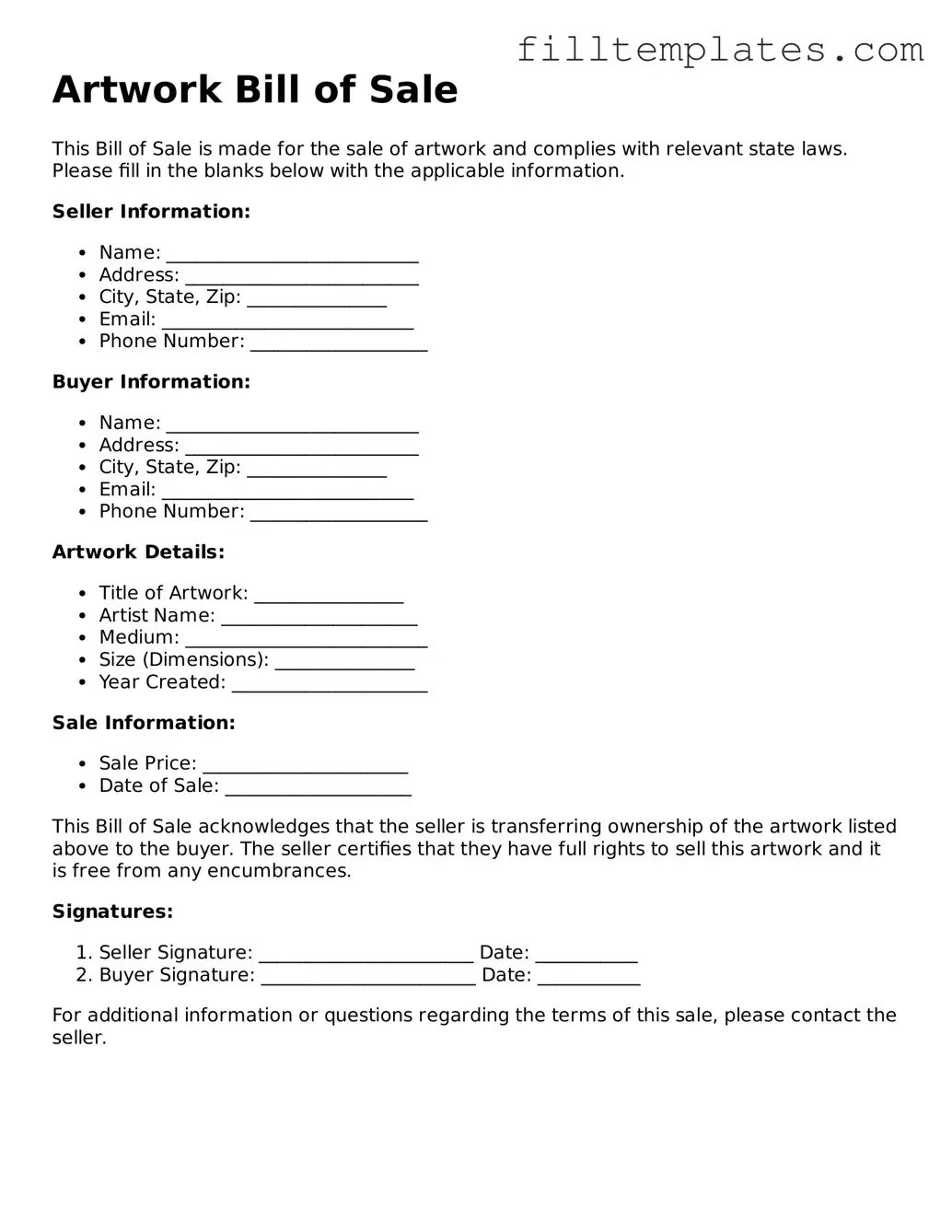The Artwork Bill of Sale form serves as a crucial document in the art world, facilitating the transfer of ownership from the seller to the buyer. This form not only provides essential details about the artwork, including its title, medium, dimensions, and condition, but it also outlines the agreed-upon purchase price and payment terms. Additionally, it often includes information about the seller and buyer, ensuring both parties are clearly identified in the transaction. By documenting the sale, this form protects the rights of both the seller and the buyer, establishing a legal record that can be referenced in the future. Furthermore, the Artwork Bill of Sale may also address any warranties or representations made by the seller regarding the authenticity of the piece, which can be vital for collectors and investors alike. Overall, this document plays a significant role in promoting transparency and trust in the art market, making it an indispensable tool for anyone involved in the buying or selling of artwork.
